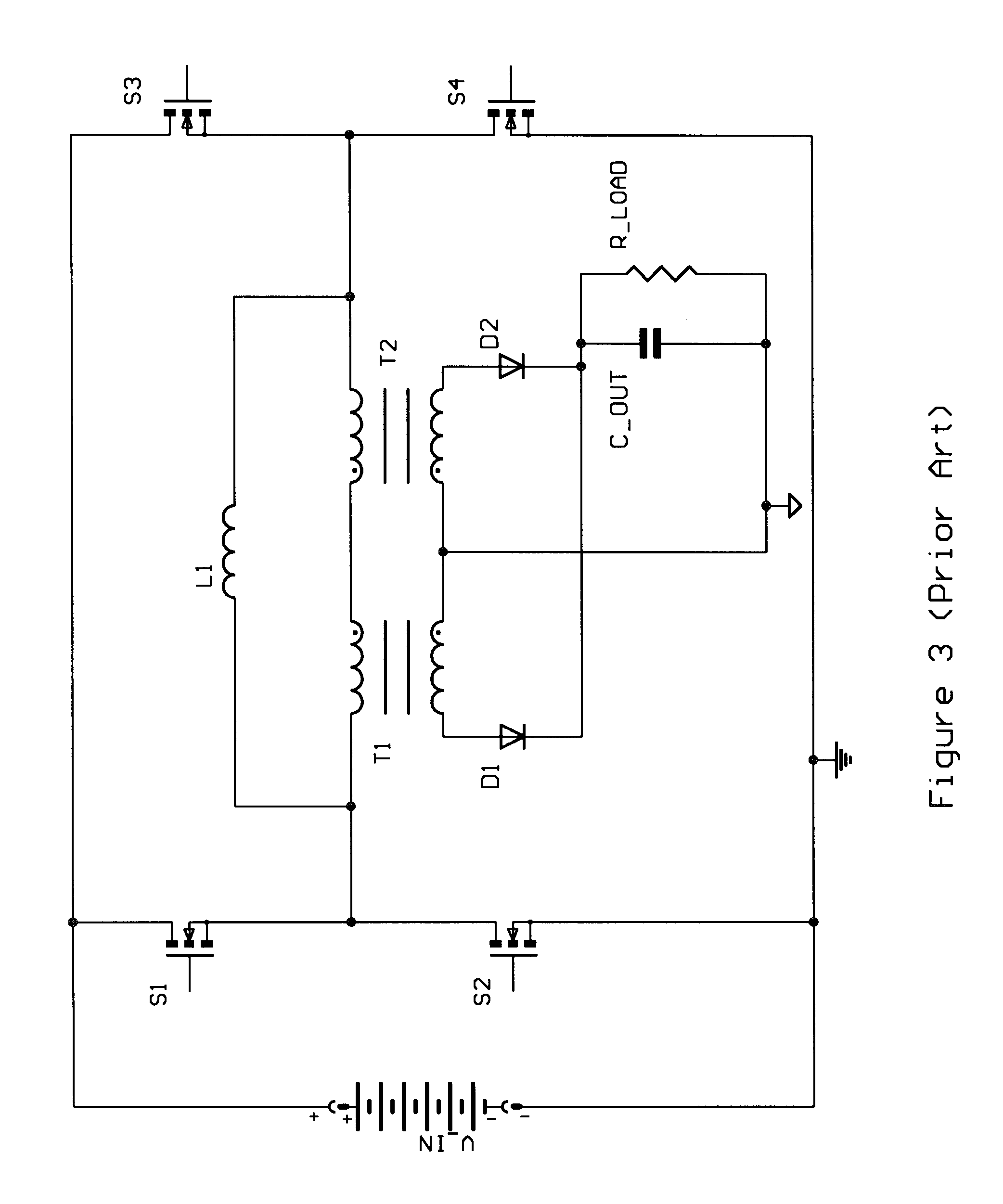High efficiency coupled inductor soft switching power converters
a technology of soft switching and high efficiency, applied in the direction of electric variable regulation, process and machine control, instruments, etc., can solve the problems of power loss associated with the switching transition, power loss in a switch, etc., to reduce the number of components, reduce the effect of switching loss and low core loss
- Summary
- Abstract
- Description
- Claims
- Application Information
AI Technical Summary
Benefits of technology
Problems solved by technology
Method used
Image
Examples
Embodiment Construction
FIG. 22 illustrates an embodiment of the subject invention, in which the secondary switches are implemented using diodes and the primary switches are implemented using power mosfets. The power mosfets contain the switch, as a semiconductor field effect transistor switch, the diode as the intrinsic body drain diode of the power mosfet, and the capacitor as the mosfet output capacitance. The diode provides a natural turn off at the time that the current drops to zero, as needed.
FIG. 40 shows an embodiment related to the FIG. 22 embodiment in which a pair of diodes D3 and D4 are added to clamp potential ringing due to the interaction of L1 with the parasitic junction capacitances of D1 and D2.
The control block suggests that either phase shift modulation or pulse width modulation may be used. There is nothing that would prevent either control method from being employed in this invention. The phase shift modulation approach has been described here as an example of one control approach bu...
PUM
 Login to View More
Login to View More Abstract
Description
Claims
Application Information
 Login to View More
Login to View More - R&D
- Intellectual Property
- Life Sciences
- Materials
- Tech Scout
- Unparalleled Data Quality
- Higher Quality Content
- 60% Fewer Hallucinations
Browse by: Latest US Patents, China's latest patents, Technical Efficacy Thesaurus, Application Domain, Technology Topic, Popular Technical Reports.
© 2025 PatSnap. All rights reserved.Legal|Privacy policy|Modern Slavery Act Transparency Statement|Sitemap|About US| Contact US: help@patsnap.com



